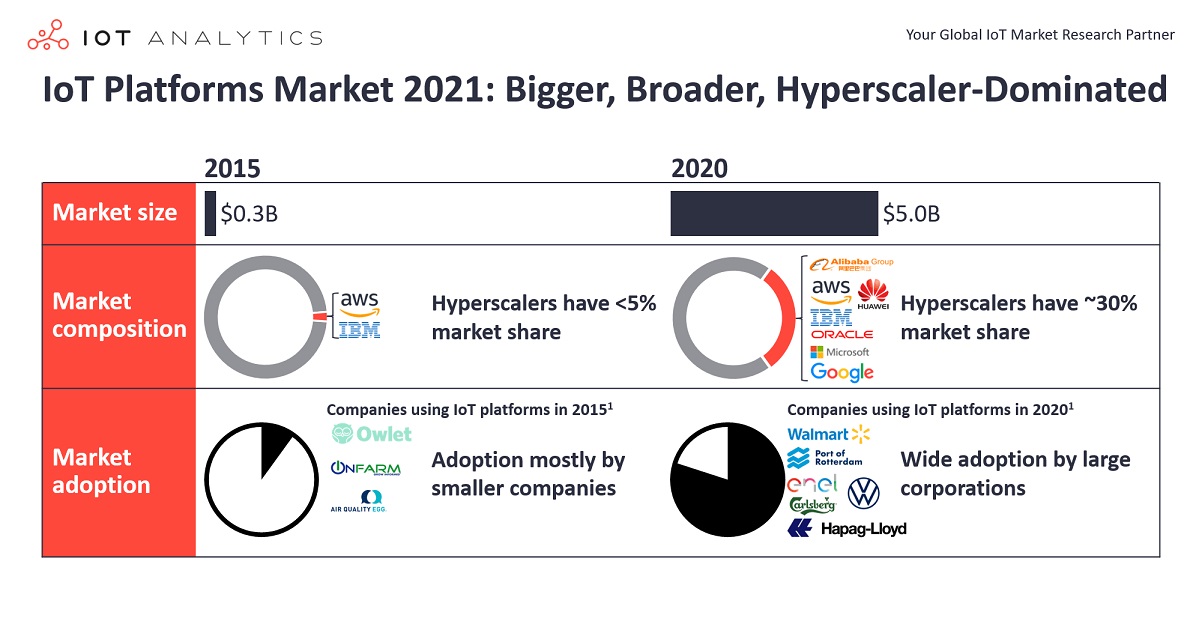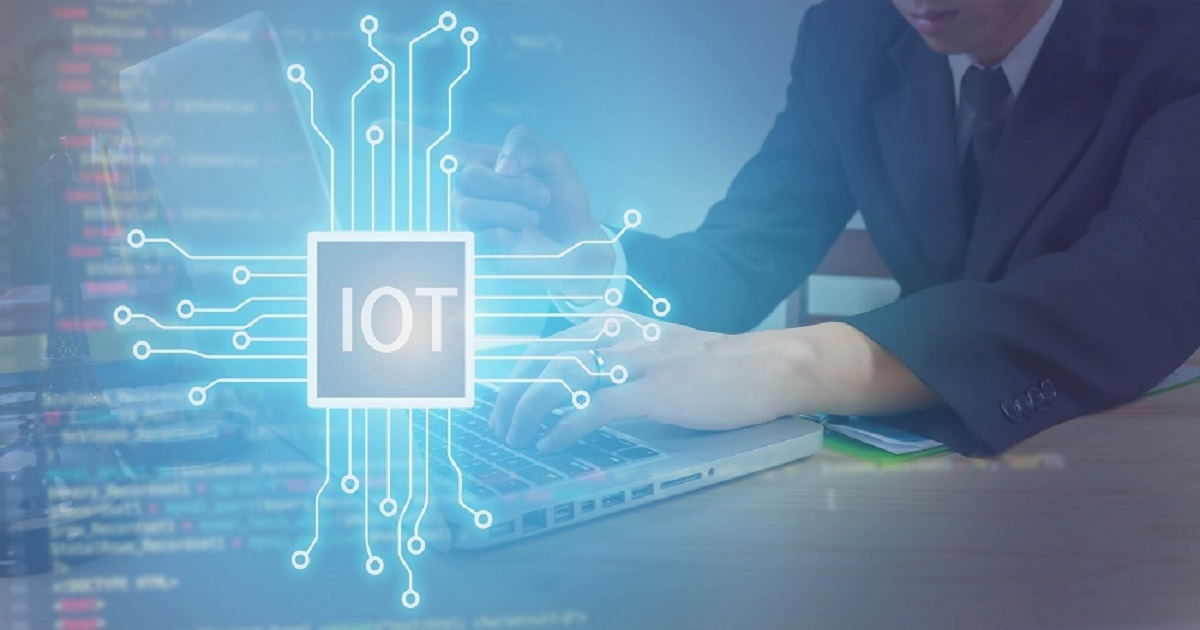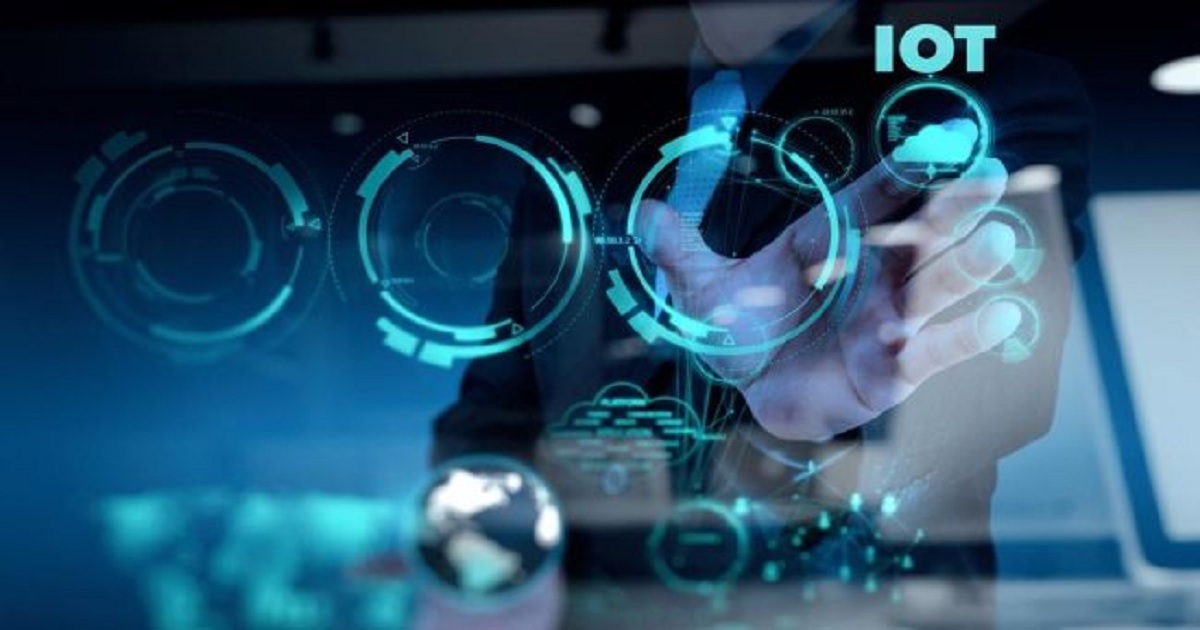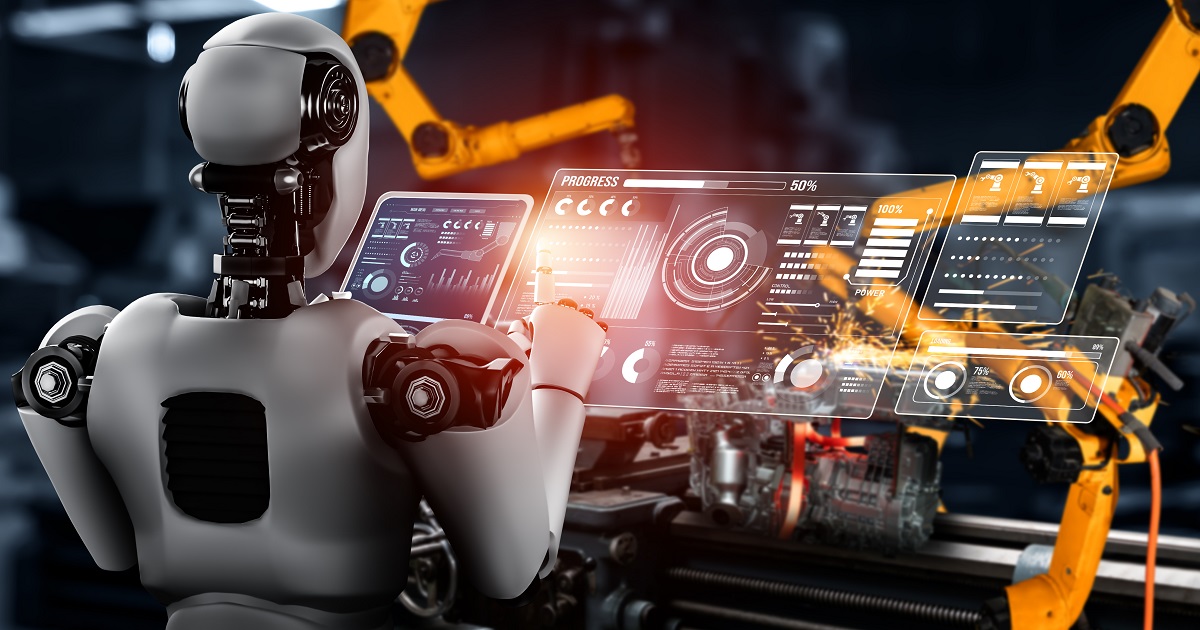
Security, IoT Security
Article | July 13, 2023
5 years ago, when we forecasted that the IoT platforms market would have a 5-year compound annual growth rate (CAGR) of 35%, we wondered if our growth projection was unrealistically high.
5 years later, it has become apparent that the forecast was actually too low. The IoT Platforms market between 2015 and 2020 grew to be $800 million larger than we forecasted back in early 2016, resulting in a staggering 48% CAGR.
Comparing what we “knew” back in 2016 to what we know today provides some clues as to why the market exceeded expectations so much. 5 years ago, no one really knew what an IoT platform was, let alone how big the market would be, which business models would work, how architectures would evolve, and which companies/industries would adopt them. The only thing that was “known” was that the IoT platforms market was a billion dollar “blue ocean” opportunity ready to be captured by innovative companies.
Read More

IoT Security
Article | July 5, 2023
Understanding the Impact of IoT Device Management
The Internet of Things (IoT) industry is growing exponentially, with the potential to become limitless. The current range of existing and potential Internet of Things devices is in itself quite enormous. This also gives businesses an opportunity to pay more attention to the newest technologies.
In ascenario with rapidly increasing numbers of devices, manual management of devices becomes close to impossible, laced with human errors. Moreover, keeping an eye on hundreds of devices one by one to make sure they work the way they should is not an easy task to undertake.
Businesses at the outset of IoT adoption are most often unaware of why they require a device management platform.This is precisely why a device management platform is so crucial.It can effectively connect toall of theconnected devices and get the required information from them in the right way.
An effective device management platform can turn out to be the vital aspect that will define the success of any small or large IoT implementation project. Such a platform would ideally allow organizations to manage their internet-connected devices remotely.
"If you think that the internet has changed your life, think again. The IoT is about to change it all over again!" — Brendan O'Brien, Chief Architect & Co-Founder, Aria Systems.
Why Do Organizations Need an IoT Device Management Platform?
An effective IoT device management platform offers simplified provisioning, centralized management, and real-time insights into all existing devices and integrations to help organizations stay on top of their deployment.
Device management platforms help you keep a check on the growing number of devices while keeping errors at bay, with your growing number of connected devices. It would ensure that you have a clear dashboard and an alerting system as an effective supporting system. In addition, getting involved with IoT device management platforms can also help you in a number of other ways.
It acceleratestime-to-market and helps reduce costs
The management platform enables secure device on and offboarding
It also streamlines network monitoring and troubleshooting
IoT simplifies deployment and management of downstream applications
It mitigates security risks
Evaluating the Future of IoT Device Management
It is predicted that the world will have more than 100 billion IoT-connected devices by 2050. The future potential of the IoT is limitless, and the potential is not about enabling billions of devices together but leveraging the enormous volumes of actionable data thatcan automate diverse business processes.
Critical Aspects of the IoT's Future
The critical aspects of IoT predictionsare fast impacting several categories all across the globe, ranging from consumer to industrial.
IoT Companies and a Circular Economy
IoT firms are assisting in the development of a future with less waste, more energy efficiency, and increased personal autonomy. A connected device system, on the other hand, must be feedback-rich and responsive, and activities must be linked via data in order to be sustainable. Ways to achieve a responsive and actionable system include:
Extending the use cycle with predictive maintenance.
Increasing utilization and reducing unplanned downtime.
Looping the asset for reuse, remanufacture, or recycle.
Common Billing and Revenue Challenges
We are currently moving toward a future where everything from cars to household machines and home security will be sold by manufacturers as subscription services. This will result in organizations selling IoT subscriptions looking for new ways to managebilling and revenue for their business model.
Service diversity
Data monetization
Complex stakeholder network
Cost management
Cohesive IoT Deployment Strategy for the C-suite
With the future of IoTon its way to becoming the most disruptive innovation and compelling technology that will facilitate better services to customers, from a support perspective, being connected remotely with customers' devices offers considerable advantages to service organizations. However, this is also not a new concept; earlier, large organizations and data storage companies were remotely connected to their client systems using dedicated telecommunications links before the commercialization of the internet.
Using the estimates of the exponential rise in connected devices, the IoT offers a wide array of opportunities to effectively improve the industry, such as:
Consumer activity tracking includes in-store applications that assess traffic flow and purchase choices.
Manufacturing, storage, distribution, and retail operations have been optimized to increase productivity and reduce waste.
Energy, inventory, and fleet assets are all used more efficiently.
Improved situational awareness, such as vehicle warning systems
Enhanced decision-making, such as medical equipment that notifies doctorswhen a patient's health changes.
Self-parking and self-driving automobiles are examples of autonomous systems.
An interesting case study with Michelin showed that they were adding sensors to tires to better understand wear over time. This data is important for clients to know when to rotate or replace tires which saves them money and enhances safety. However, this also implies Michelin can move away from selling tires and instead lease them. Because sensor data will teach the corporation how to maintain the tires, Michelin now has a new economic incentive to have tires last as long as feasible. IoT device management plays a crucial role in effectively accumulating and processing data from all the widely distributed IoT sensors.
Conclusion
As more sectors discover the advantages linked machines can bring to their operations, IoT enterprises have a bright future ahead of them. Newer services are steadily being pushed out on top of IoT infrastructure in industries ranging from healthcare to retail, telecommunications, and even finance. Due to increasing capacity and AI, service providers will move deeper into IT and web-scale industries, enabling whole new income streams as IoT device management platforms adapt to address these obstacles.
FAQ
Why Is Device Management Crucial for the IoT?
An IoT device management platform's features may help you save time and money and increase security while also providing the critical monitoring and management tools you need to keep your devices up-to-dateand optimized for your unique application requirements.
What Impact Will the IoT Have on the Management or Administration Sectors?
IoT technology allows for increased collaboration, but it will also free up your team's time from monotonous and isolating duties. For example, routine chores may be encoded into computers, freeing up time to concentrate on higher-order tasks.
What Are the Basic Requirements for IoT Device Management?
The four essential needs for IoT Device Management are as follows.
Authentication and provisioning
Configuration and Control.
Diagnostics and monitoring
Updating and maintaining software.
Read More

Industrial IoT, IoT Security
Article | July 12, 2023
Three out of four IoT projects are considered a failure, according to Cisco. This is troubling but even more so when Cisco also found 61 per cent of companies say they believe they’ve barely begun to scratch the surface of IoT can do for their business? Businesses believe in the long-term value offered by integrating IoT into their business plan, however, they lack the knowledge of what is required to ensure the success of such a complex project. By studying past failed projects, technology leaders can gain a better understanding of why they failed and what they can do differently when evaluating and undertaking new IoT initiatives.
Read More

Software and Tools
Article | May 26, 2022
Introduction
We live in a world where technology is becoming more and more intertwined with our daily lives. It’s no longer just our laptops, smartphones, and tablets connected to the internet – now, our homes, cars, and even our clothes can be too. This interconnectedness is made possible by the internet of things (IoT), a network of physical objects equipped with sensors and software that allow them to collect and exchange data.
IoT devices have the potential to transform the way we live and work. They can make our lives more convenient and help us be more efficient. IoT devices can also help us to save money and to improve the quality of our lives.
IoT devices are devices that are connected to the internet and can collect, send, and receive data. They can be anything from fitness trackers to industrial machines. IoT devices are used across a variety of industries, and they are becoming more and more commonplace. At [x]cube LABS, we have helped global enterprises deliver great value to their consumers with IoT devices, and in this blog post, we will talk about how IoT devices are used in different industries. Additionally, we will give some examples of IoT devices that are being used in each industry.
Healthcare
IoT devices are being used in healthcare to provide better patient care and to improve the efficiency of healthcare organizations. IoT devices can be used to monitor patients’ vital signs, track their medication adherence, and collect data about their health. IoT devices can also be used to provide remote patient monitoring, track medical equipment, and support clinical research.
There are many different types of IoT devices that are being used in healthcare. Some of the most common types of IoT devices that are being used in healthcare include wearable devices, such as fitness trackers and smartwatches; medical devices, such as pacemakers and insulin pumps; and hospital equipment, such as IV pumps and ventilators. All these devices collect data that can be used to improve patient care and make healthcare organizations more efficient.
Manufacturing
IoT devices are being used in manufacturing to improve the efficiency of production lines and to reduce the amount of waste. IoT devices can be used to track the production of products, monitor the condition of machinery, and control the flow of materials. IoT devices can also be used to provide data about the quality of products and to improve the safety of workers.
One of the most common types of IoT devices that are being used in manufacturing is the industrial sensor. Industrial sensors are used to monitor the production of products, the condition of machinery, and the flow of materials. Industrial sensors can also be used to provide data about the quality of products and to improve the safety of workers. The availability of data from industrial sensors is helping manufacturers to improve the efficiency of production lines and to reduce the amount of waste.
Retail
IoT devices are being used in retail to improve the customer experience and increase sales. IoT devices can be used to track inventory, provide customer loyalty programs, and collect data about customer behavior. IoT devices can also be used to provide personalized recommendations, targeted promotions, and real-time customer support.
IoT devices are changing the retail sector in a number of ways. One of the most important ways that IoT devices are changing retail is by providing retailers with real-time data about their customers’ behavior. This data allows retailers to provide a more personalized shopping experience. IoT devices are also being used to improve the efficiency of retail operations, such as inventory management and customer loyalty programs.
Transportation
IoT devices are being used in transportation to improve the safety of drivers and reduce traffic congestion. IoT devices can be used to monitor the condition of vehicles, track their location, and control their speed. IoT devices can also be used to provide data about traffic conditions and to improve the efficiency of transportation systems.
One of the most common types of IoT devices that are being used in transportation is the GPS tracker. GPS trackers are used to monitor the location of vehicles, and they can be used to track the speed and movement of vehicles. GPS trackers can also be used to provide data about traffic conditions and to improve the efficiency of transportation systems.
Agriculture
Agriculture has become increasingly reliant on IoT devices in recent years. IoT devices are being used in agriculture to improve the yield of crops and to reduce the amount of water and fertilizer that is used. IoT devices can be utilized to monitor the condition of crops, track the location of farm animals, and control the flow of irrigation water.
These innovations are helping farmers to increase the yield of their crops and to reduce the amount of water and fertilizer that is used. The data collected by IoT devices is also helping farmers to make more informed decisions about planting, irrigation, and crop maintenance.
Smart Homes
Smart homes are becoming increasingly popular, and IoT devices are the backbone of these systems. IoT devices are being used in homes to improve the security of the home, reduce energy consumption, and improve the quality of life. They can be used to monitor the condition of the home, track the location of family members, and control the operation of home appliances. What’s more, IoT devices can also provide data about the quality of the air, which can be used to improve the efficiency of home security systems. In the future, IoT devices will become an integral part of the smart home, and they will be used to control a wide variety of home appliances and systems.
Aviation
The aviation industry is making use of IoT devices to a great extent. The aviation sector is one of the most heavily regulated industries in the world, and IoT devices are being used to improve the safety of passengers and crew members.
IoT is changing the aviation industry by providing data that can be used to improve the safety of pilots and passengers. IoT devices can be used to monitor the condition of aircraft, track their location, and control their speed. IoT devices can also be used to provide data about weather conditions and to improve the efficiency of aviation operations, which can ultimately lead to lower airfare prices.
Energy
The energy sector is also utilizing IoT for a variety of applications. One way that IoT is changing the energy sector is by providing data that can be used to improve the efficiency of energy production and consumption.
They are being used to improve the efficiency of power generation and distribution. IoT devices can be used to monitor the condition of power plants, track the location of power lines, and control the flow of electricity. By using IoT devices to monitor and optimize the power grid, energy companies can reduce the amount of power that is wasted and ultimately lower energy bills for consumers.
Conclusion
IoT devices are changing the world in a number of ways. They are providing data that can be used to improve the efficiency of operations in a variety of industries, from retail to transportation to agriculture. It is likely that IoT devices will become an increasingly important part of our lives in the future due to the efficiency and data that they can provide.
Read More